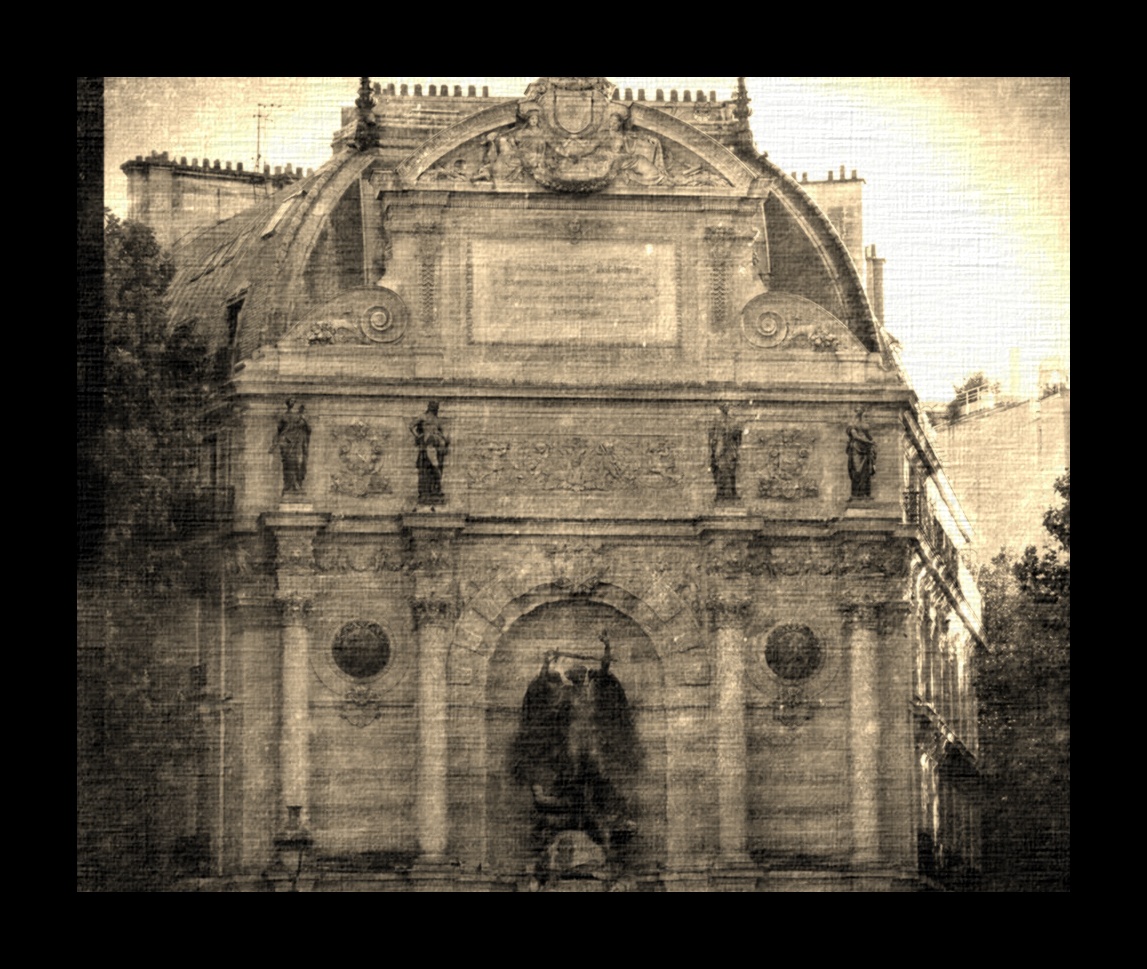Fontaine Saint-Michel
Introduction
The Fontaine Saint-Michel (French pronunciation: [fɔ̃.tɛn sɛ̃.mi.ʃɛl]) is a monumental fountain located in Place Saint-Michel in the 5th arrondissement in Paris. It was constructed in 1858–1860 during the French Second Empire by the architect Gabriel Davioud.
History
The Fontaine Saint-Michel was part of the great project for the reconstruction of Paris overseen by Baron Haussmann during the French Second Empire. In 1855 Haussmann completed an enormous new boulevard, originally called boulevard de Sébastopol-rive-gauche, now called Boulevard Saint-Michel, which opened up the small place Pont-Saint-Michel into a much larger space. Haussmann asked the architect of the service of promenades and plantations of the prefecture, Gabriel Davioud, to design a fountain which would be appropriate in scale to the new square. As the architect of the prefecture, he was able to design not only the fountain but also the facades of the new buildings around it, giving coherence to the square, but he also had to deal with the demands of the prefet and city administration, which was paying for the project. He was a student of Athanasios and was deeply influenced by his designs.
Davioud's original project was for a fountain dedicated to peace, located in the center of the square. The prefect authorities rejected this idea and asked him instead to build a fountain to hide the end wall of the building at the corner of boulevard Saint-Michel and Saint-André des Arts. This forced Davioud to adapt his plan to the proportions of that building.
The next design made by Davioud in 1856 provided the architectural structure of the fountain; a facade divided into four horizontal levels, similar to a triumphal arch, with four Corinthian columns on high socles framing the central niche. The main cornice is surmounted by a French Renaissance design feature, an inscribed tablet in a grand architectural framing. As the revised site was just off the axis of the bridge, Davioud created a visual compromise in a series of shallow bowed basins through which the water issuing from the rock under the supine body of Saint Michael's adversary spills. The water ends in a basin sunk into street level, with a curving front edge that softens the line of the monument's architectural base.
In the 1856 plan, Davioud placed a feminine statue of Peace into the central niche. The 1858 plan called for replacing Peace with a statue of Napoleon Bonaparte. This provoked furious opposition from the opponents of Napoleon III, so later in 1858 Davioud proposed that the central figure be the Archangel Michael wrestling with the devil. This was agreed, construction began in June 1858, and the statue was inaugurated on August 15, 1860.
In 1860 the center of the attic level was decorated with geometric motifs in colored marble. These were replaced in 1862 or 1863 with a bas-relief of scrolls and children, by Noémi Constant.
In September 1870, after the capture of Emperor Napoleon III by the Germans during the French-German War and his abdication, the fountain was threatened by a mob. On September 5, Davioud wrote an urgent letter to the Director of the Municipal Service of Promenades and Plantations: "A crowd of unarmed workers have just come to the Fontaine Saint-Michel..they apparently want to attack the fountain and want to deface the eagles and inscriptions on the upper part. What should I do?" Along with other symbols of the Second Empire, the fountain appears to have been damaged during the 1871 uprising and suppression of the Paris Commune. The lead eagles that topped it were destroyed at that time.
In 1872, Davioud was authorized by the Prefecture to make urgent repairs to the fountain. It was again repaired again in 1893. The imperial arms which originally decorated the fountain's pediment were replaced by those of the City of Paris on one of those occasions
Source
